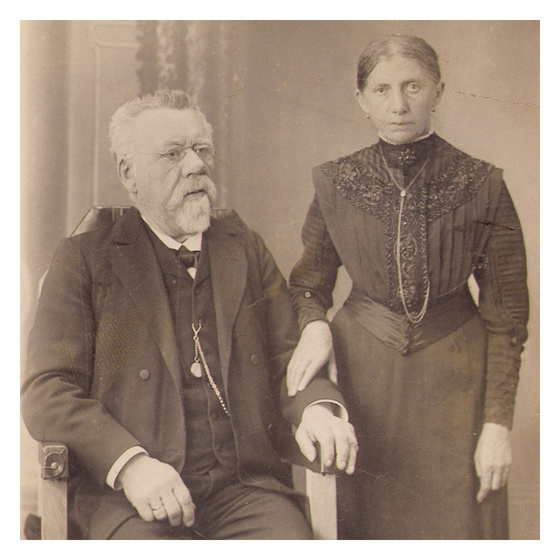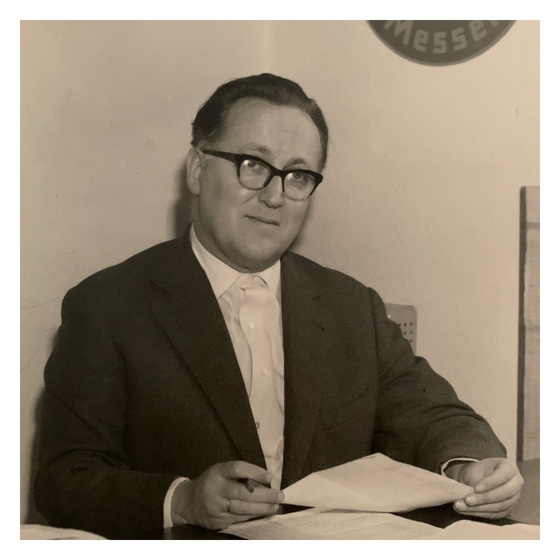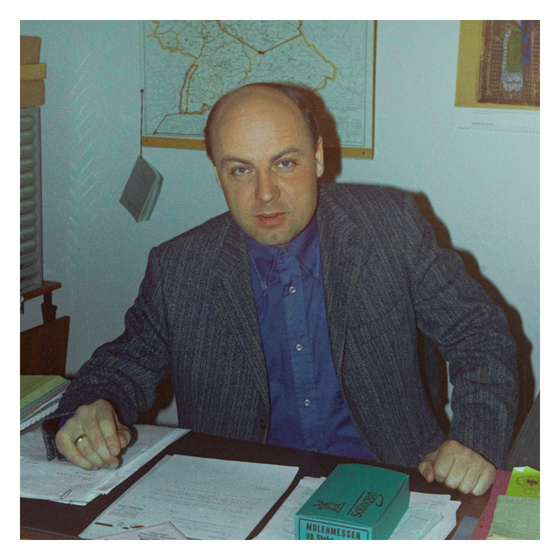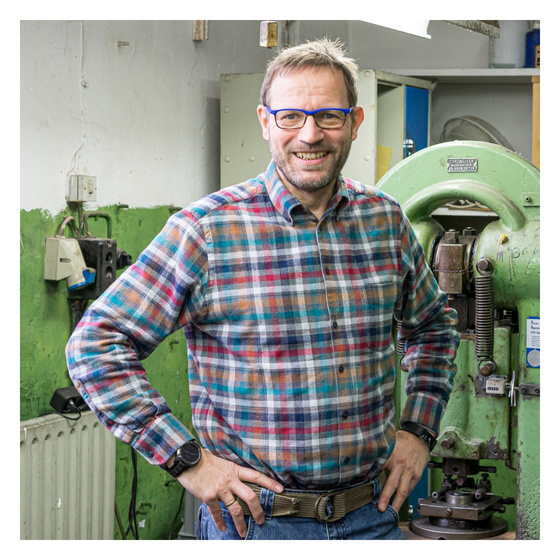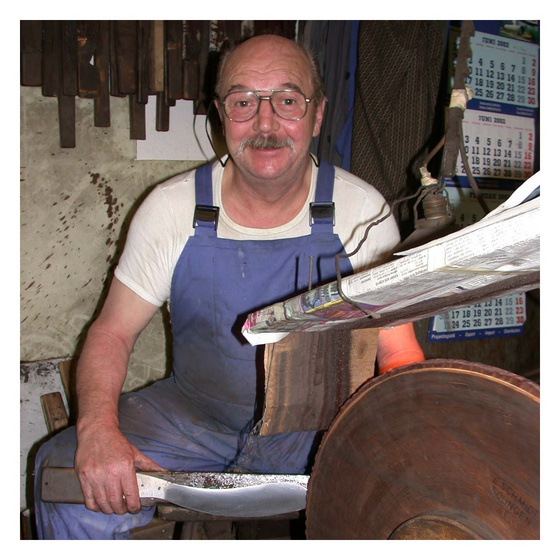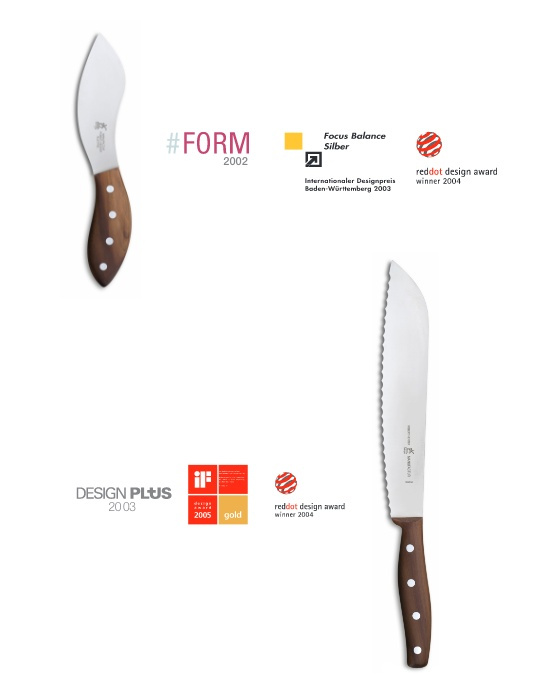Robert Herder co-owned his father’s company with his brothers and mother after the death of his father Daniel Herder II (the younger). This was founded in 1810 by Daniel Herder I (the elder) at the Keusenhof, which emerged from the manufacturing community of the sons of Clemens Herder that existed around 1770. Clemens was Robert’s great-grandfather.
In 1872 Robert Herder left the Daniel Herder company and founded the Robert Herder company at Keusenhof. He initially focused on supplying retail customers in Thuringia and Saxony, only making good quality cutlery, bread knives, slaughter knives, paring knives and scissors. Pocket knives, straight razors etc. were bought and sold.
The owner Robert Herder visited his customers himself. He was a good businessman with a high level of specialist knowledge and a good reputation, who enjoyed a high level of acceptance among his employees and customers.
The history of the Windmühlenmesser: From a family business to an international brand
The founding generation: Robert Herder and his wife Emilie
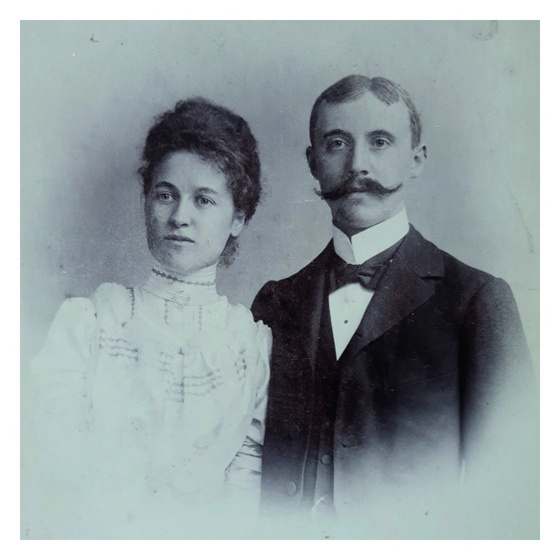
Paul Herder with his wife Anna, née Habran. She came from Fléron in Belgium. Paul was born on March 12, 1872, the year the company was founded. He joined his father's company as an apprentice in 1888 at the age of 16. Paul and Anna married on April 26, 1902. Anna was one of the first women in Solingen to receive power of attorney for her husband's company.
The 2nd generation: Paul Herder with his wife Anna
Paul Herder was an entrepreneur of exceptional caliber. Equally talented and imaginative in technical, creative, sales and negotiation tasks. The company owes him the relevant foundations and principles that are still valid today and that make up the “Windmill”. They formed the basis for the long-term success of Windmühlenmesser.
Already at the young age of 17 in 1890 his father Robert sent him to Belgium and Holland with the task of establishing commercial contacts in the local markets for the company and also of finding a suitable trademark for this. He was very successful as he managed to recruit a very capable representative for Belgium for the company.
In addition, upon his return, he suggested a Windmill as a trademark to his father, inspired by the many Windmills in those countries. However, it was still a few years before the Windmill manifested itself as a trademark.
Previously, the company had registered a “Vierblättriges Kleeblatt” (1896) for the domestic market and an “Adlersäule” (1898) for export as trademarks. However, the “Windmill” became the company’s most successful mark and was registered in 1905. But Paul didn’t just bring new customers and a new trademark with him.
He also took on the task of designing an attractive, memorable packaging to draw customers’ attention to the product. Part of it was a label, which praised the merits of the goods in short statements. Later, the label was supplemented with a red diagonal stripe. The success was resounding and so every Windmühlenmesser was equipped with this label on the handle. Paul became a partner in the company in 1911 and sole proprietor in 1914.
The 3rd and 4th generations: Werner, Günter and Robert
Günter Herder and Werner Herder, Paul Herder’s sons, followed as the third generation.
Werner, born on May 6th, 1903, joined the company at the age of almost 23 in 1925, after a study visit in Munich and doing a traineeship in an export company.
Günter, born on February 19, 1916, joined the company after his return home in 1943 due to his serious war injury. Before the war, after his baccalaureate, he completed a traineeship at the Hamburg export company Henry Bethe.
After the war, the brothers successfully continued the company. Günter Herder was responsible for administration and sales, Werner Herder for production and partly for the markets in Belgium and Holland. Through great diligence and the unshakable upholding of quality, sales grew and the company was able to get out of debt for the first time.
Due to the growing sales, an increase in production became necessary. The middle part of the factory building, which was damaged during the war, was rebuilt and completed in 1958 for the grinding and handle assembling workshops.
Later, in 1966, the new office building on Ellerstraße followed.
In the mid-1950s, Werner’s eldest son Robert joined the company. He gradually took over the duties of his father Werner. He died unexpectedly in 1985 due to illness at the age of only 50.
4th and 5th generations: Giselheid Herder-Scholz and Frank Daniel Herder
Giselheid Herder, born on November 4th, 1960, Günter Herder’s youngest daughter, joined the company in 1986 together with her husband Franco Scholz. After her baccalaureate, she completed a bank apprenticeship and was trained as a foreign exchange trader at the bank as a second apprenticeship. She practiced this profession until 1986. From 1988, after the unexpected death of her husband, she joined the company full-time and took over the management after the death of Günter Herder in April 1993.
Frank Daniel Herder, born December 6, 1964, son of Robert Herder, followed in the same year, 1986. After graduating from school and training as a forwarding agent, he completed a number of technical internships in various Solingen companies until 1988, after which he actively joined the company and in 1993 also became a manager.
The 1990s brought great challenges. The trading landscape has changed fundamentally as a result of German reunification and the opening of the Eastern European countries. Markets have shifted and new ones have emerged. The introduction of the euro as the new currency in 2000 again posed challenges in terms of reasonable pricing and the positioning of our brand and its products. It helped a lot here that we have a wide range of customers in a wide variety of industry sectors.
In everything we have remained true to our quality maxim and have gone one step further - to even more intensive craftmenship in production. If our Windmühlenmesser have always been made by hand to a large extent, we wanted to strengthen this even further, as we are convinced that a knife made carefully by hand is simply better. Since the old trades of knife production, such as grinder, fine-grinder, handle assembler and trimmer, were already abolished in 1969, the employees who were trained at that time were of course already of retirement age or close to it. Because we wanted to continue making the special qualities, such as handmade blue-glazed blades with special shapes and finely crafted handles made from local woods such as cherry, plum or walnut and since 02.01.2013 FSC®-certified copper-beech. We therefore decided to revive the old training occupations in order to preserve the craft, which we succeeded in doing after six years of negotiations with the Solingen Chamber of Industry and Commerce.
Our motto:
“Good knives are made by hand.”
With the help of our last master grinder, Wilfried Fehrekampf, we have set up a training program for young grinders. Starting in 1997, he trained our young talent for ten years, well past his retirement age. We are deeply grateful to him for this.
His successors carry on this traditional craft of dry-fine-grinding and blue-glazing (fine grinding) with honor and pride. It forms the basis for the preservation of the production of the handmade knives, in the spirit of our grandfather Paul
Herder. We did the same from 2002 onwards with the crafts that relate to the manufacture of the handle, the “Reiden” (handle assembly) and the “Ausmachen” (working out the shape of the handle). Two years later, the apprenticeship in the same professions followed for cutlery as well, because we had taken over the Eichenlaub company in 1998.
Our first design awards: Parmoulin and Grandmoulin, 2002 and 2003
The 2000’s were busy times dedicated to the further establishment and growth of the company. We reorganized our warehouses and production, invested and rebuilt. We designed knives with new designs that met the spirit of the times, but are still unmistakable Windmühlenmesser. The Parmoulin, the K-series and the bread knife Grandmoulin as well as the fish knives SeaKnives and the cheese knives series Fromaĝo, which were created in the 2010s, are some of them.
From 2002 we received renowned design awards for various of these new knives, such as the IF design award in Hanover or the Red Dot Award and even the Good Design Award in Japan.
From 1999 until today we have developed further markets, also outside of Europe. In addition to our core markets in Belgium and the Netherlands, we are also represented in Japan, South Korea, Taiwan and Saudi Arabia. Today Windmühlenmesser are known in 24 countries around the world.
We would not have managed all of this without the work and loyalty of our employees, who have now grown to a team of over 80 people. We would like to thank our employees for walking this often not always easy path with us and for upholding the message of craftsmanship and the company.
Good knives are made by hand, in good and bad times, even after 150 years.
